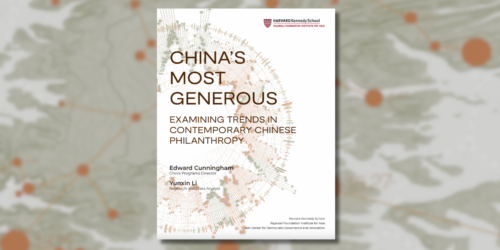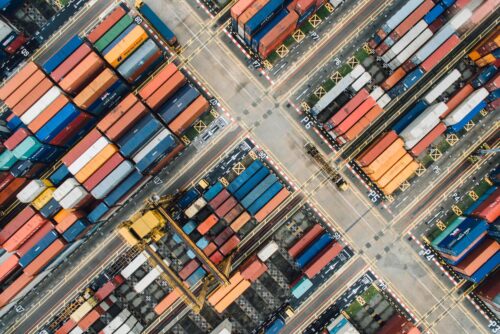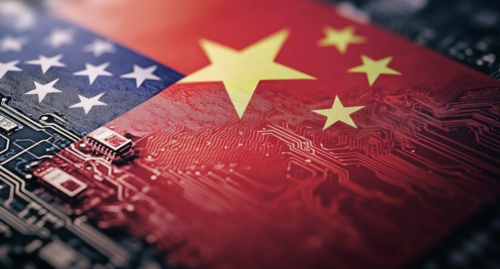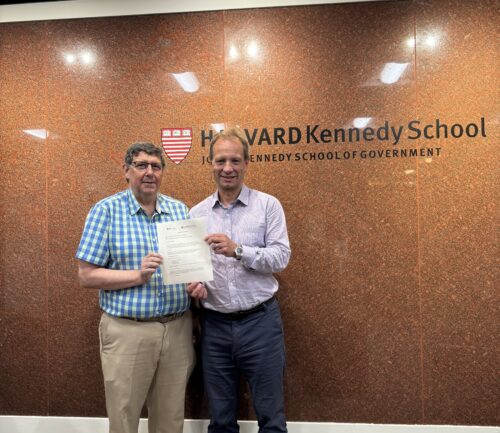Five years after the United States left the Trans-Pacific Partnership (TPP), the Biden administration is working to establish a regional economic agreement with Asia-Pacific countries. The pact, officially titled the Indo-Pacific Economic Framework (IPEF), is meant to counter China’s increasing influence amongst South and Southeast Asian countries—though some question if the framework will be effective as it lacks the traditional trappings of a trade agreement, notably tariff reductions.
As negotiations start with the 13 countries currently part of the agreement, it’s unclear how much benefit the framework will deliver back to member nations and advance the agreement’s four main goals: improving supply chains, expanding clean energy, fighting corruption, and advancing digital trade. To learn more, the Ash Center sat down with Vietnam Program Senior Economist David Dapice to discuss the framework and its potential impact in the region.
What is the Indo-Pacific Economic Framework and how does it compare to the Trans-Pacific Partnership (TPP)?
The Biden administration has been under pressure to establish a policy towards Asia that moves beyond security issues. While “the Quad” (US, Japan, India, and Australia) have been discussing security issues and the new South Korean government has supported measures against Russia after its Ukraine invasion, other countries were hoping that the US would move towards a new trade pact. While existing tariffs are low –the US already imports far more than it exports with ASEAN– a trade agreement would make arbitrary changes in protection levels harder. Without a trade agreement, a new administration could raise tariffs or otherwise change the terms of trade. A trade agreement would also give US exporters equal access as EU or Japanese firms to ASEAN. However, there does not appear to be Congressional support for joining the TPP (Trans-Pacific Partnership), a comprehensive agreement on trade and standards, which the US had negotiated but then declined to ratify.[1]
Instead, the Indo-Pacific Economic Framework (IPEF) was proposed. The IPEF identified various areas such as the digital economy, supply chain resilience, clean energy and anti-corruption measures which were less contentious in the US and more easily agreed to without Congressional approval. IPEF also allows Asian countries – thirteen in all – to sign on to individual initiatives without fully participating in all of them. There is no doubt that IPEF is sensitive to the desire of Asian countries not to have to choose between the US and China. It is much less clear if it is a complete strategy or an adequate policy package to counter China’s gains in the economic sphere in Asia.
Does the IPEF have real substance or is it political window dressing?
It would be wrong to dismiss the IPEF as lacking substance. It has narrow but real relevance in the areas it identifies. For example, if the US extended “green” loans for clean energy, it could help other nations avoid the full impact of high fossil fuel prices and also aid them in meeting targets to lower carbon and other pollution. Likewise, many countries need to improve their digital security, and this could help. Having said that, IPEF is well short of a signal that there is continuing and bipartisan support for US engagement in Asia. While President Biden is trusted among Asian leaders, there is a question about who will next sit in the US oval office and whether there will be policy continuity. You do not want to pour billions of dollars into factories and then have them unable to function due to US policy reversals.
Just last week, the Prime Minister of Vietnam visited the Kennedy School and spoke about his desire to see Vietnam integrated into the international economy whilst maintaining its economic and political freedom. How do you see this agreement aligning with Vietnam’s interests and economic advancement in particular?
The Vietnamese Prime Minister said he wanted an economically integrated Vietnam that was also autonomous. By this, I understood that he wanted significant degrees of policy freedom and did not want to choose between the US and China. The IPEF gives him flexibility and does not demand he take sides, but neither does it offer the long-term stability in trade relations that he would prefer. Given the US interest in supporting an independent Vietnam, he is likely encouraged if not satisfied.
China already has a regional trade agreement in place, which includes many of the countries involved in the framework. Do you think the IPEF will be effective in countering China’s influence?
It would definitely be better for the US to signal that there is full domestic support for ongoing engagement in Asia. Lacking that, the IPEF takes some positive steps but still leaves the US outside of the growing network of trade agreements in Asia. China’s “wolf warrior” diplomacy and internal troubles with COVID and its debt-heavy economy make it a bit less attractive than it has been, but it is still in a stronger economic position in the region compared to the US.
>While we need to restrain illegal and aggressive moves by China, we also need to respect their legitimate concerns. It would be a mistake to treat them as an enemy rather than as a serious competitor. If the US combines with its regional allies such as Japan, South Korea, Taiwan, and Australia, it collectively would provide a counterweight to a Chinese monopoly on economic power. China is far weaker than a united US, EU, Japan, South Korea, and Taiwan – let alone Canada, Australia, and perhaps India.
[1] The other nations in the negotiations, led by Japan in 2018, agreed to the TPP and renamed it – without the US – the “Comprehensive and Progressive Agreement for Trans-Pacific Partnership” or CPTPP.



